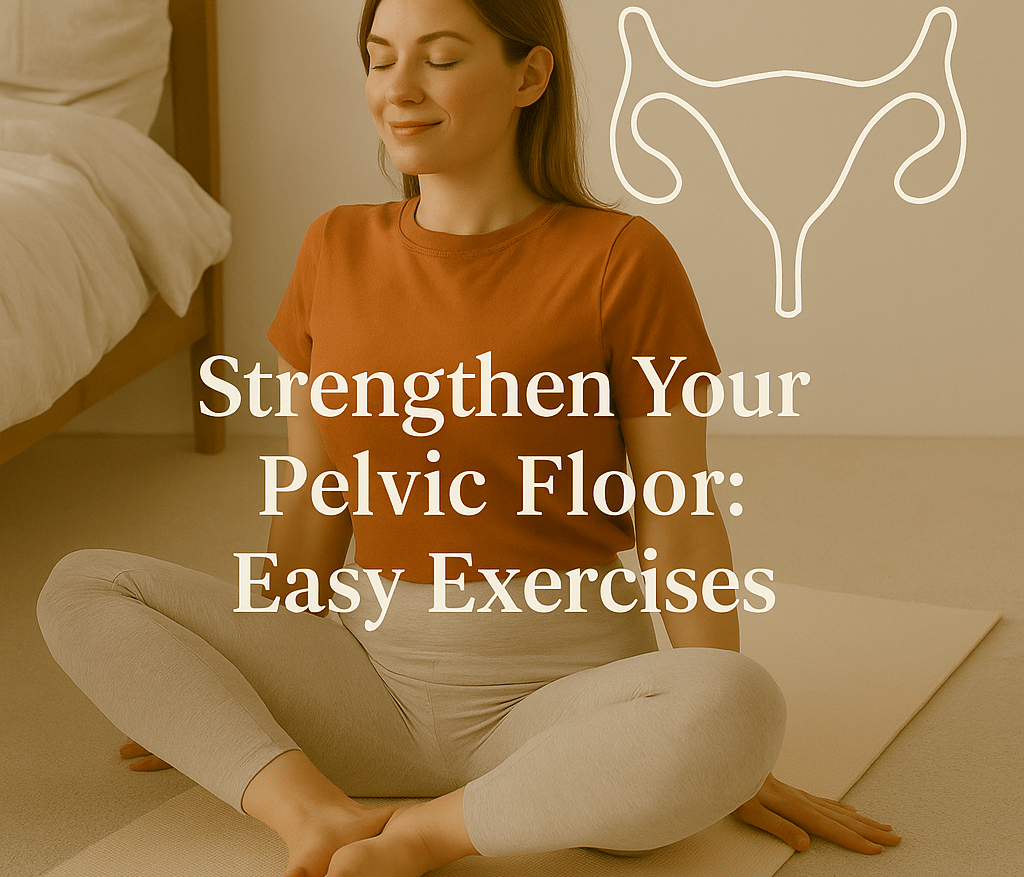Strengthen Your Pelvic Floor: Easy Exercises
Last updated: April 3rd
Written by: Justine Wilson


Wondering If Your Pelvic Floor Is Weaker Than It Should Be?
You’re not alone. Many women experience leaks when they sneeze, laugh, or run—but don’t always realize their pelvic floor might be the culprit. Whether you're postpartum, approaching menopause, or just feeling "off" in your core, strengthening your pelvic floor is one of the best things you can do for your body.
I started paying attention to mine after noticing changes in my posture and bladder control. With just a few simple exercises, I saw improvement in weeks—not just physically, but in my confidence, too.
Why Pelvic Floor Health Deserves More Attention
Your pelvic floor muscles support your bladder, uterus, and bowel. When they’re weak, you may experience urinary incontinence, pressure, or lower back pain. And yet, we rarely talk about it until there’s a problem. Strengthening these muscles can improve everyday comfort, stability, and even enhance intimacy.
You might have wondered whether kegels are enough, or how to actually do pelvic floor exercises the right way. The good news: you can start anytime, anywhere—and it’s easier than you think.
How to Activate Your Pelvic Floor (and Know You’re Doing It Right)
First, find the right muscles. Imagine stopping the flow of urine midstream. That lifting sensation you feel? That’s your pelvic floor engaging. You can try this lying down, sitting, or standing—whatever feels most natural.
Start with basic contractions. Gently lift and squeeze your pelvic floor muscles, hold for three to five seconds, then release. Rest for a few seconds and repeat. Aim for 10 reps a few times a day. Don’t hold your breath, clench your abs, or squeeze your thighs—this should be a subtle, internal movement.
As you get stronger, add variations. Try quick pulses (contract and release rapidly) or longer holds up to 10 seconds. You can also integrate pelvic floor awareness into exercises like bridges, squats, or deep belly breathing.
Consistency is key. These aren’t one-and-done moves—they’re part of a long-term care routine that supports your entire core and pelvic health.
Ready to Rebuild Your Core Confidence?
Subscribe to our wellness newsletter for guided pelvic floor routines, expert Q&As, and support for every stage of womanhood.
Newsletter
Subscribe to our health and wellness newsletter where we share healthy living tips, news, and wellness ideas.